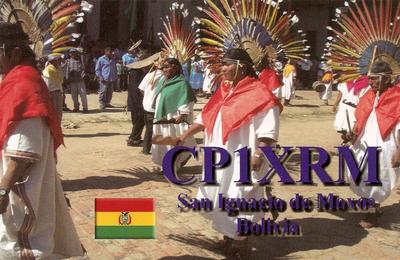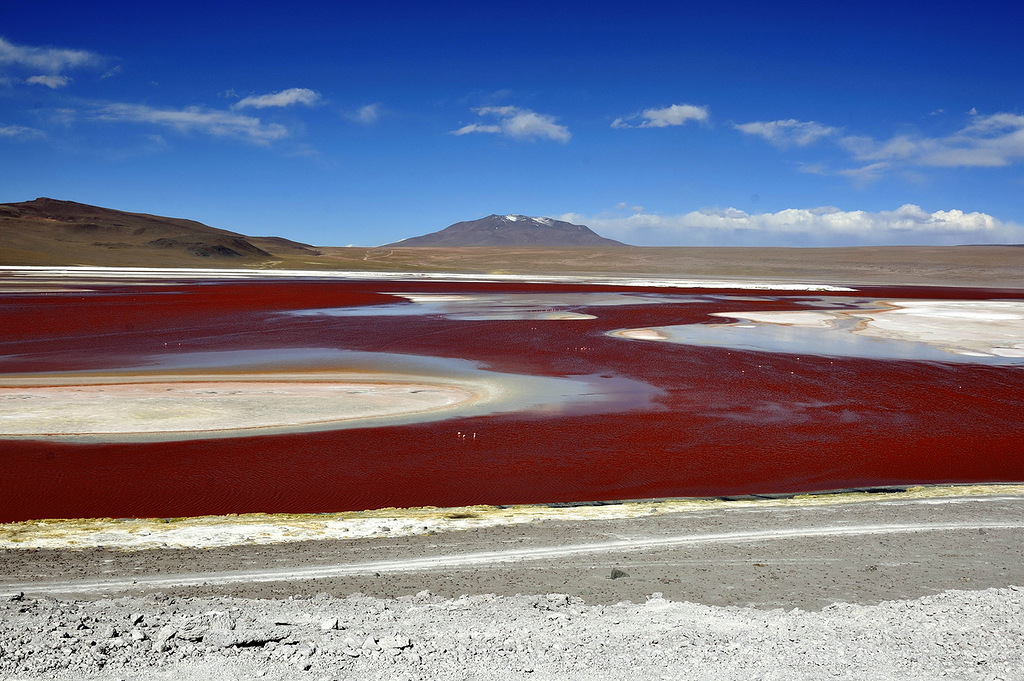Antonio, EA5RM will be active again as CP1XRM from Bolivia, until 27 April 2021.
He will operate on 160 - 10m, SSB, Digital modes, using 100 watt solar powered station and vertical antenna.
Recent DX Spots CP1XRM
QSL via home call direct, LOTW.
Ads for QSL direct:
ANTONIO GONZALEZ, P.O. BOX 930, E-03200 ELCHE, Spain.
All about Bolivia
Tiwanaku Settlement and Empire
Bolivia as a region has been occupied since 2000 years ago. It was first occupied by Avmara who actually settled in the Western Bolivia, Northern Chile and Southern Peru. Avmara as a matter of fact, originated from the olden days advanced civilization found at Tiwanaku. This city experienced a great urbanization between the period of 600 and 800 AD and made to to attain great power within the vicinity. The people of Tiwanaku of Western Bolivia were associated with agriculture in the past. With a land mass of about 6.5sq km, Western Bolivia is presently estimated to have between 285,000 and 1,482, 000 people as against the early estimate of 15,000 to 30,000 people. As Tiwanaku increased in urbanization in the year AD 400, it went further to inhabit peacefully but politically Yungas, Peru and Chile thereby influencing them with their culture. This was achieved through the process of creating; colonies, state cults and trading harmony among these areas. This extension continued to other areas until dramatic transformation was seen in the area of residential population increase as well as civic architectural standards. Tiwanaku was seen as an empire but this is achieved through the instrumentality of trading between her and all these cities. This trade include; surplus food gains from the region within the Empireand control of Ilama herds which was renowned for carrying food to and from different parts of the empire. The power growth of Tiwanaku continued until AD 950 when there was an outstanding climate change.

Spanish Government in Bolivia
As a matter of fact, the climatic change brought about the declination of water in the Titicana basin and as a result of this, rate of food production began to reduce. This in turn started to reduce the power of Tiwanaku as this is their major source power that gave them control over other cities within their empire. As this continued, Tiwanaku disappeared in AD 1000 and the land remained without being inhabited for quite a long time. However, after a very long period of years, the Inca Empire now inhabited the Western Bolivia and that was between 1438 and 1527. This was during the reign of their 9th Emperor who was later succeeded by his son but the control of Inca Empire over Western Bolivia could not last for a long time owing to the fact that it lacks strong organizational structure. The Inca Empire was rooted out by the Spanish merged with India in 1527 as a result of the internal weakness of the Empire which was caused by power tussle among successors of the Emperor. Apart from the internal weakness of the Inca Empire, the war strategy they were using which was attacking only by the light of the full moon was also supposed to be changed but the Emperor at that time refused and the consequences was a disastrous war in 16th November, 1532, which is referred to as the Battle of Cajamarca. About a year later, Inca capital known as Cuzco was taken as a Spanish settlement. Although, during Spanish reign over the Western Bolivia, there was a lot of revolutions but Spanish came out successfully in all and formed a city known as La Paz in 1548. This city later became a city for commerce as well as shipment place. Though Spanish was in control of major Bolivia but few areas on Bolivian lowlands were controlled by the Indians being independent of the Spanish. Spain established a high and consolidated leadership over Bolivia and her environ. This enables her to last for a long time.
During the Napoleonic war, Spanish government in Bolivia began to weaken as criticism and sentiments started increasing among members of the higher ranks in Spanish government. Eventually, Bolivian independence was declared in 1809 though the struggle for its realization continued for 16 years before a republic was actually established.

Democracy in Bolivia
From the time of Bolivian independence, Bolivia has being under the military leadership. In 1981, military rebellion started and Garcia Meza who was in charge then was forced out. Within a period of one year and 2 months, three other governments have struggled to gain power over Bolivian government. With this happening, unsteadiness in the military regime within this period forced military to elect a new Chief Executive in 1980. In 1982, a former head of government Herman Siles became president once again. During his time, there was a lot of mismanagement of fund, social tension and weak governance. As a result of this, he was forced into an early election which made him not to serve his term completely. In 1985, another government took over under the leadership of Paz Estenssoro who could not control unstable economy. Also, in his tenure as the president, exportation was on the declining state as well as increase drug trafficking but four years later; he was able to establish a strong economy as well as social stability. With these achievements, military were compelled to stay out of power, democracy was instilled and human right violations were stopped. Nevertheless, mining was not managed well and this led to the laying off of about 20,000 workers in the mining industry.
In 1989, Paz Zamora became the president. He started with economic reforms which were initialized by Paz Estenssoro. He also fought aimlessly terrorism within the country and consequently called for an attack on terrorism in 1990. Nevertheless, he did not do much concerning narcotics trafficking as he allowed the greatest narcotics trafficker to go unpunished though, he fought other trafficking businesses. He also could not fight eradication of coca.

Recent Bolivia
Bolivia in the recent time is facing so much challenge in their gas as it happened to be one of the largest sources of income to the country. As a result of this, strike action and putting of blockades on roads with subsequent reaction from the rival has led to quite a lot of death cases as from September, 2003.
Video Bolivia

